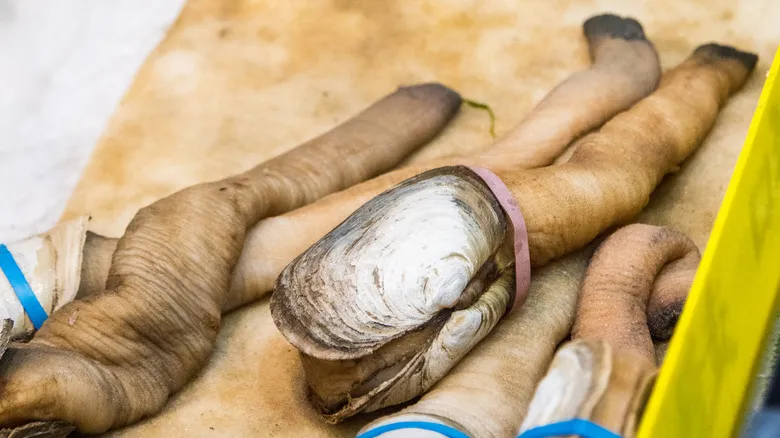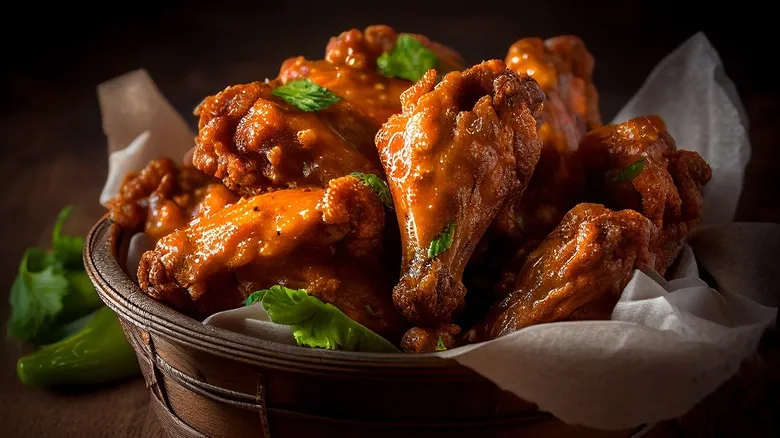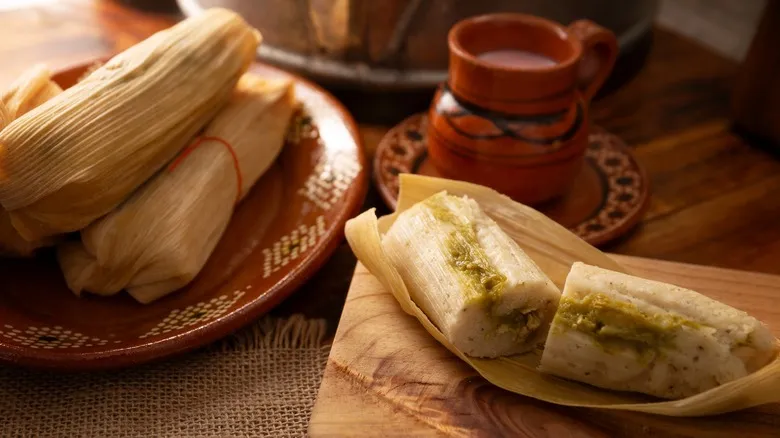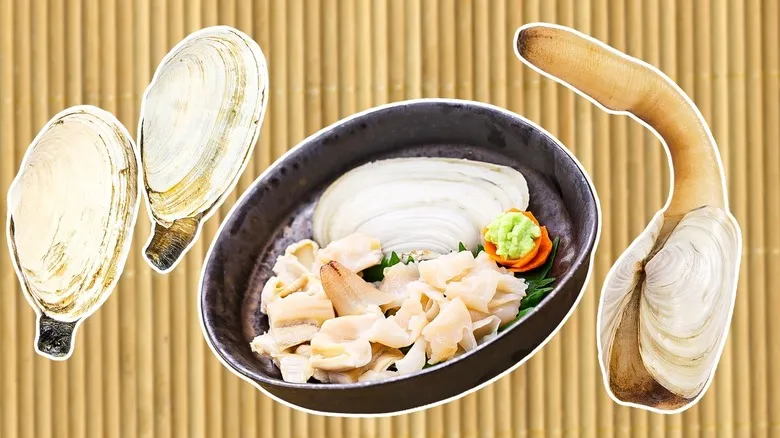This clam shines with minimal preparation

With its incredibly fresh ocean taste, there's no need to complicate the preparation of geoduck. Start with some simple prep work, as the clam's long neck is encased in a thin membrane. To remove it, just blanch it briefly in hot water, and it will come off easily. Once that's done, this part of the geoduck is ready to be sliced thinly and enjoyed raw. The thicker the slice, the more crunch you'll get, so be sure to cut it thin — you might even want to sharpen your knife for this task.
The clam's delicate, briny flavor pairs beautifully with mild, texturally interesting vegetables like cucumber, fennel, or avocado. You could also layer it on a salad with vibrant herbs such as mint or heartier greens like collard greens. Another option is to drizzle it with an Asian-inspired soy sauce vinaigrette. The pairing possibilities are limitless — the clam is also delightful as a crudo-style appetizer.
The part of the clam found inside the shell is a bit firmer, so it requires a quick application of heat. A light sear will do the trick, perhaps enhanced with a butter baste for added richness. Alternatively, you can quickly stir-fry it in a hot wok with some finely chopped aromatics. In China, geoduck is often steamed and paired with the popular flavor of green onion (which is even used in coffee). Asian cuisine also features geoduck in hot pot, a culinary experience enjoyed in various cities across the Pacific Northwest.
Seek out specialty sellers to locate geoduck

Locating this clam can be quite challenging due to its tendency to burrow and its limited supply. Most harvesting takes place in Washington state, with some activity also occurring in Oregon and British Columbia. Approximately 90% of the harvest is exported to Asian markets, where foreign seafood commands high prices (according to BBC). Even within the U.S., geoduck typically retails for around $30 per pound.
In the Pacific Northwest, foraging for geoduck is a cherished activity that honors a long-standing Native American cultural tradition. The Nisqually tribe originally named the clam "gweduc." Today, foraging requires a permit, and there are restrictions on the number of clams that can be harvested daily. Unfortunately, geoduck faces sustainability challenges in both wild and farmed environments, complicating its distribution.
One of the most prominent suppliers is Taylor Shellfish, the largest distributor in the country, which ships geoduck nationwide for those looking to incorporate it into their home cooking. Several other vendors also offer the clam online, with some providing pre-cleaned options. Regardless of how you acquire the clam, it can be stored in the refrigerator for optimal freshness. Simply wrap it in a damp paper towel and place it in the bottom drawer, where it can last up to four days. If you find yourself with an excess, you can freeze it, but keep in mind that this may diminish the quality for raw consumption.
Recommended

The Secret To Juicy Fried Chicken Is Inside Your Liquor Cabinet

Mistakes Everyone Makes When Cooking Beef Stroganoff

2 Easy Swaps If You Can't Find Corn Husks Or Banana Leaves For Tamales

The Southern Way To Elevate Your Bologna Sandwich
Next up

